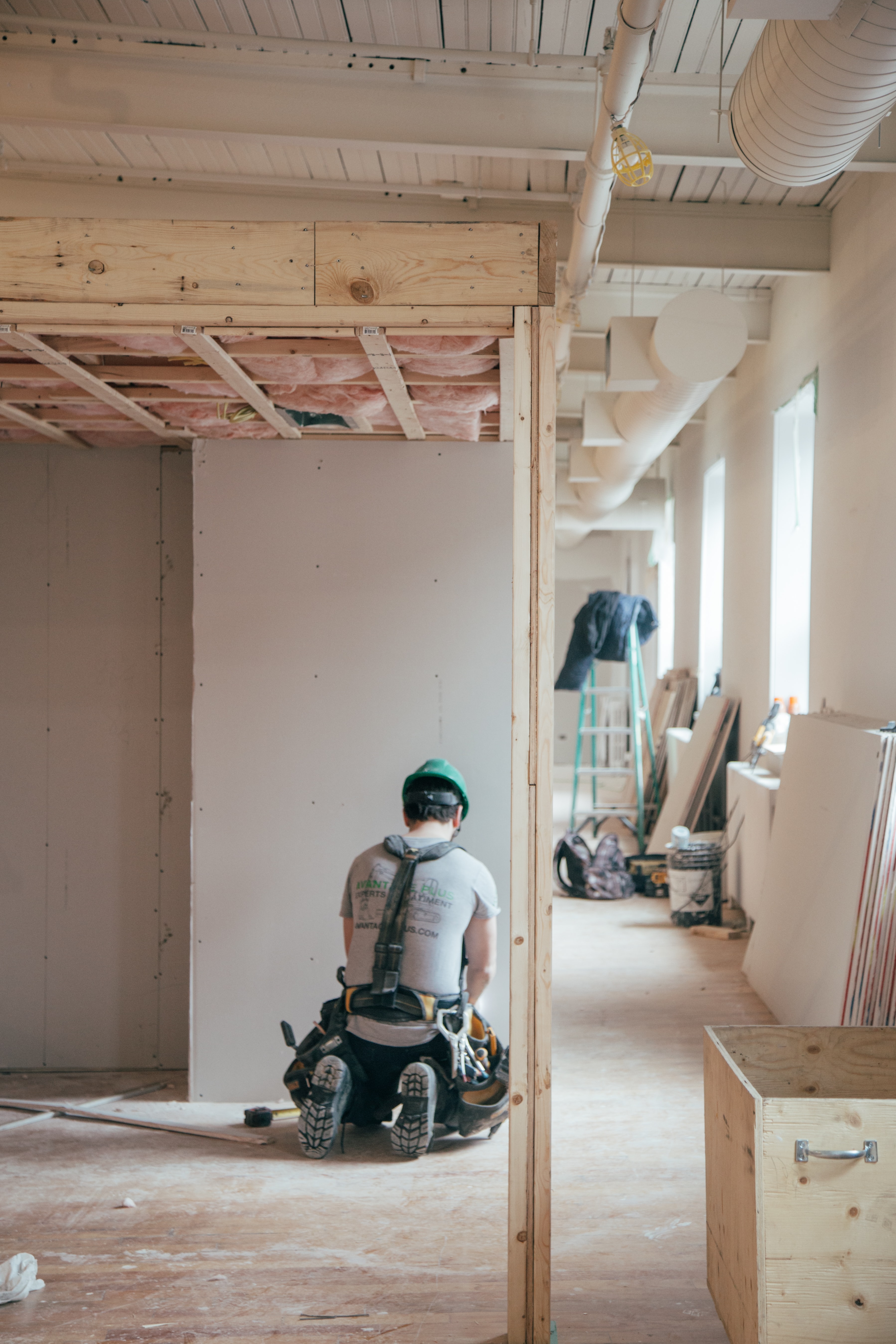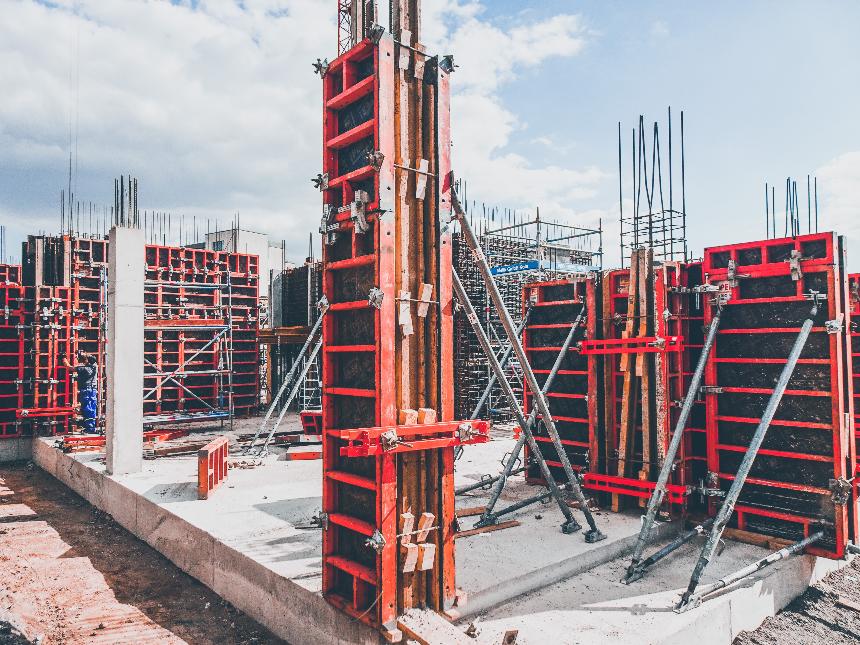How To Patch A Hole In Drywall

At some point in time, you will probably experience either a large or small hole (or maybe even both!) in your drywall. Maybe some kid punched a hole in the wall or an impromptu hockey game knocks a big hole. It could even be that the doorknob swung into it a little bit harder one too many times or you have improperly installed a toilet paper holder that left a large, gaping hole. Whatever the cause is, you will find yourself with the need to patch that drywall hole.
If you only have small holes in drywall caused by screws or hooks, drywall fasteners or wall fasteners, then it will just entail a simple repair. But if it involves a larger hole-- well, you don’t have to fret! You can patch that drywall hole in no time by following these steps for DIY repairs that you can do.
Steps in repairing a large hole in drywall
Step 1: Check for wires
Before you start cutting out the damaged area, we advise you first to check the wall for obstructions. You probably don’t know that a wire, pipe or duct can be lurking behind. One clue that you can look for is louvered access doors and panels or any other access doors. If these things are nearby the damaged area, then you know that wires or pipes could be running through the wall. If so, you have to work carefully around them with a drywall or keyhole saw or you can make a shallow cut by repeatedly scoring the line with a sharp utility knife to begin a hole patch. Then, using a drywall saw or utility knife, cut out the said section.
Step 2: Insert backer boards
The backer boards should be cut about 4 in. longer than the height of the hole. Softwood or pine works well. Then, hold them tight to the backside of the drywall when fastening them. To avoid pricking your fingers on the screw points if they pop out the backside, hold the boards carefully. The boards will be drawn tight because of the drywall screws. Lastly, sink the screw heads slightly below the drywall surface.
Step 3: Tipping the Joints
The third step is to lay a1/8-in.-thick bed of patch drywall compound over the joints and then using a flexible 6-in. knife, press paper tape into the compound. You should immediately apply a thin layer of compound on top of the tape and then leave it to dry.
Step 4: Apply a second and third coat
You can now apply a second coat of compound with at least 6 in. beyond the edge of the first coat to taper the edges of the repair. Let dry and then add a third coat for smoothing any remaining uneven areas.
Step 5: Sand the dry compound
As a final step in fixing a hole in the drywall, sand the dry compound lightly with 100-grit sandpaper to remove ridges and blend edges. You can also prime and paint once done with sanding.
You can get frustrated at the cost and difficulty of repairing holes in your drywall. Fortunately, repairing holes in drywall is actually pretty simple if you just have the right materials and you follow the above-mentioned steps.
For more information on how to improve your drywall or for any other construction projects, visit https://www.bestaccessdoors.com/louvered-access-panels/.

How To Find The Best Renovating Company
Are you dreaming up a better office? How about a new kitchen or a spa-worthy bathroom? Thinking of ways and designs for renovating is the most fun part but the actual work of choosing the right renovation contractor is the most important and most difficult part. Sorting through everything in order to find the best renovating company is like how access doors are important. Once you open an access door, you will be able to access the important parts of your wiring or plumbing system. Finding the best renovating company is the first step that you should take.
Hiring a renovating or remodeling contractor is an intimidating work. After all, the contractor will rip out your walls and spend your money, so it’s really important that you like and trust them enough to partner with them. If you’re getting ready to start a huge renovation, we’re here to help and we’ve put together a list of tips on how to find the best renovating company that will fit your project.
1. Do Your Research
This applies to both your project and the company that you will hire. You will want to have a clear idea of what you expect as an end result and a realistic budget that you want to spend. For the company that you will hire, you have to focus on companies that can provide you with a display of their prior experience with your kind of project. Look for one that has testimonials and work samples. More importantly, find a company that is both accredited and insured.
2. Interview Various Contractors
If you already have a list of two or three companies that seem capable of doing the work, the next step is to interview them. Find out whether they’ve ever taken on a project of the same scale as yours and if they feel confident that they can pull the necessary permits for the job and how long will it take to finish everything. Listen to the answers that display assurance and professionalism that they will give you. You might also want to choose a contractor that you are comfortable with and who also seems capable of completing the project.
3. Ask For Quotes
Once the interviews are completed, ask them to provide a quote for the project such as the cost of materials for the remodeling and also the price for the estimated number of labor hours. Take note also that the lowest option may not always be the best for you. Ask around how much it usually takes for a remodel like yours. Make sure that you also take into consideration the experience and available work samples.
4. Put it in Writing
After you have settled on the contractor that you feel will best fit your job, make sure that you put the terms of their quote into a legally binding contract. The contract should include items like payment schedule and the process for making changes to original project terms. Ensure that both parties sign the contract.
Having a signed contract will give you an avenue for legal recourse when something goes wrong during the course of the project.
5. Be Flexible to a Point
Unfortunately, renovating is never an exact science. Even the best contractors may run into some unforeseen problems. You should be ready to give room for changes in terms of budget and timeframe. However, if the company you hired keeps pushing your project aside or keeps adding up charges that don’t make sense, don’t be afraid to find someone else who will finish the job.
Finding the best company is always a big decision. However, it doesn’t mean that it’s insurmountable. Just follow these tips that will allow you to consistently select a contractor that best fits your project.
For a reliable renovating partner when it comes to quality access doors and panels, visit https://www.bestaccessdoors.com/.
Contact
your.email@example.com
355 Template Street
San Francisco, California 94110
+1 (555) 555 1000
SIGN UP For OUR NEWSLETTER
© Copyright Best Access Doors
How To Patch A Hole In Drywall
At some point in time, you will probably experience either a large or small hole (or maybe even both!) in your drywall. Maybe some kid punched a hole in the wall or an impromptu hockey game knocks a big hole. It could even be that the doorknob swung into it a little bit harder one too many times or you have improperly installed a toilet paper holder that left a large, gaping hole. Whatever the cause is, you will find yourself with the need to patch that drywall hole.
If you only have small holes in drywall caused by screws or hooks, drywall fasteners or wall fasteners, then it will just entail a simple repair. But if it involves a larger hole-- well, you don’t have to fret! You can patch that drywall hole in no time by following these steps for DIY repairs that you can do.
Steps in repairing a large hole in drywall
Step 1: Check for wires
Before you start cutting out the damaged area, we advise you first to check the wall for obstructions. You probably don’t know that a wire, pipe or duct can be lurking behind. One clue that you can look for is louvered access doors and panels or any other access doors. If these things are nearby the damaged area, then you know that wires or pipes could be running through the wall. If so, you have to work carefully around them with a drywall or keyhole saw or you can make a shallow cut by repeatedly scoring the line with a sharp utility knife to begin a hole patch. Then, using a drywall saw or utility knife, cut out the said section.
Step 2: Insert backer boards
The backer boards should be cut about 4 in. longer than the height of the hole. Softwood or pine works well. Then, hold them tight to the backside of the drywall when fastening them. To avoid pricking your fingers on the screw points if they pop out the backside, hold the boards carefully. The boards will be drawn tight because of the drywall screws. Lastly, sink the screw heads slightly below the drywall surface.
Step 3: Tipping the Joints
The third step is to lay a1/8-in.-thick bed of patch drywall compound over the joints and then using a flexible 6-in. knife, press paper tape into the compound. You should immediately apply a thin layer of compound on top of the tape and then leave it to dry.
Step 4: Apply a second and third coat
You can now apply a second coat of compound with at least 6 in. beyond the edge of the first coat to taper the edges of the repair. Let dry and then add a third coat for smoothening any remaining uneven areas.
Step 5: Sand the dry compound
As a final step in fixing a hole in the drywall, sand the dry compound lightly with 100-grit sandpaper to remove ridges and blend edges. You can also prime and paint once done with sanding.
You can get frustrated at the cost and difficulty of repairing holes in your drywall. Fortunately, repairing holes in drywall is actually pretty simple if you just have the right materials and you follow the above-mentioned steps.
For more information on how to improve your drywall or for any other construction projects, visit https://www.bestaccessdoors.com/louvered-access-panels/.


